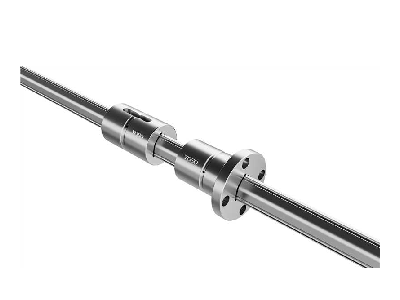I det moderne feltet for industriell automatisering, som streber etter høy hastighet og høy presisjon, er en kjernekomponent avgjørende: kulegitteret. Hvis du søker løsninger for å forbedre utstyrets ytelse, er forståelse av driftsprinsippene og fordelene med kulegitter et nødvendig steg. Denne artikkelen gir en helhetlig forståelse av kulegitter og avdekker hvorfor de har blitt stjernekomponenter i nøyaktighetsoverføringsindustrien.
1. Definisjon av kulegitter: En integrert løsning for presisjonsoverføring
Kuletromler er innovative mekaniske komponenter som på en genial måte kombinerer høystiv lineær guiding og effektiv momentoverføring. I motsetning til tradisjonelle glide-tromler, som opplever høy friksjon og er utsatt for slitasje, oppnår kuletromler nesten friksjonsfri rulling ved å integrere kuler mellom trommelakslingen og hylsen.
Enkelt sagt, er det som et "superlager" som gliker glatt samtidig som det roterer kraftfullt, og gir utstyr uovertruffen glatthet og effektivitet i kraftoverføring.
II. De viktigste funksjonene og fordeler til kuletromler
Hvorfor er kuletromler så populære? Dette skyldes først og fremst deres følgende hovedfunksjoner:
- Høypresisjons lineær guiding : Mens de overfører moment, tillater de ekstremt glatt og presis lineær bevegelse mellom akslingen og hylsen, noe som resulterer i svært høy posisjoneringsnøyaktighet.
- Effektiv dreiemomentoverføring : De kan tåle og overføre enorme rotasjonsmomenter, og sikrer stabil kraftoverføring uten glipeslitasje.
- Lav friksjon og lang levetid : Rullingsfriksjon reduserer slitasje og energitap betydelig, noe som minsker vedlikeholdsbehovet og forlenger utstyrets levetid.
- Høy stivhet og høy bæreevne : Utformet for å tåle kombinerte belastninger som radiell kraft, dreiemoment og til og med bøyemoment, og sikrer stabil drift under tunge belastninger.
- Høyhastighetsapplikasjoner : Deres lave friksjon gjør dem ideelle for høyhastighets svingende bevegelse, og oppfyller de ekstreme effektivitetskravene til moderne industriell maskineri.

III. Analyse av kulesporstruktur
Kulesporens overlegne ytelse kommer av dens nøyaktige indre struktur, som består av fire hoveddeler:
Spennakse : En presisjonsjslept aks av legeringsstål med en halvsirkulær rille på overflaten, som fungerer som referansebanen for bevegelse.
Spornøtt: En mutter som passer over aksen, med riller i innerveggen som tilsvarer aksens riller, og danner en kulebane.
Kuler : Høypresisjons kulelagerkuler som fungerer som bærende medium, ruller i rillene for å overføre kraft og omforme bevegelse.
Sirkulasjonssystem (Returner) : Kernteknologien som fører kulene gjennom returkanalen i enden av banen for automatisk sirkulasjon, noe som muliggjør ubegrenset bevegelse.
Denne nøyaktige sirkulasjonsmekanismen er den grunnleggende årsaken til at kulelister kan oppnå kontinuerlig, jevn og langhubbet bevegelse.
IV. Hovedbruksområder
På grunn av sine unike fordeler har kulelister blitt foretrukket valg for følgende høyteknologisk utstyr:
Industrielle Roboter : Presis bevegelse og kraftoverføring i ledd, armer og andre applikasjoner.
CNC-maskinverktøy : Verktøymagasiner, verktøybyttere og spindeltilbakemeldingssystemer.
Halvlederutstyr : Waferhåndteringsroboter, inspeksjonsplattformer.
Presisjonsmåleinstrumenter og ulike automatiserte enheter.
Kort sagt løser kulegevirer med sitt innovative rullekontaktdesign utfordringene knyttet til tradisjonelle overføringskomponenter, som høy friksjon, lav effektivitet og dårlig presisjon. De er en ideell løsning for å forbedre utstyrets hastighet, nøyaktighet, stivhet og levetid. Når du velger overføringskomponenter til ditt neste presisjonsutstyr, er kulegevirer uten tvil et høytytende alternativ som bør vurderes nøye.
 EN
EN
 AR
AR
 BG
BG
 CS
CS
 DA
DA
 NL
NL
 FI
FI
 FR
FR
 DE
DE
 EL
EL
 HI
HI
 IT
IT
 JA
JA
 KO
KO
 NO
NO
 PL
PL
 PT
PT
 RU
RU
 ES
ES
 SV
SV
 TL
TL
 ID
ID
 UK
UK
 VI
VI
 HU
HU
 TH
TH
 TR
TR
 FA
FA
 AF
AF
 MS
MS
 SW
SW
 GA
GA
 CY
CY
 BE
BE
 KA
KA
 LA
LA
 MY
MY
 TG
TG
 UZ
UZ

